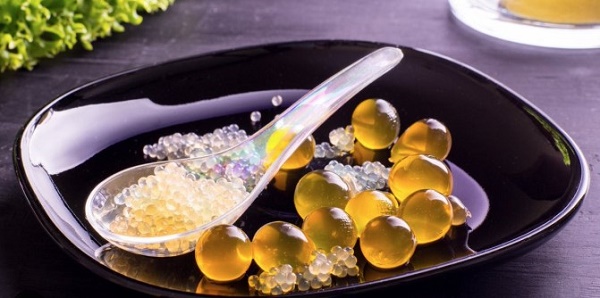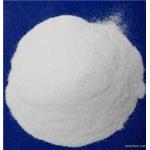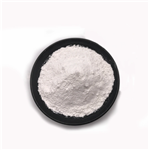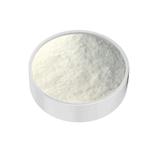Sodium alginate and calcium lactate
Oct 10,2023
Sodium alginate and calcium lactate
Sodium alginate and calcium lactate are both the ingredients needed for Basic Spherification and reverse Spherification techniques. As a common additive, they are often added to foods and medicines.

Sodium alginate
Sodium alginate is a food product derived from brown algae or seaweed. This compound is a stabilizing, thickening, and gelling agent that forms heat-stable gels in the presence of calcium. This property allows chefs to create gelatinous spheres, a technique known as spheroidization. It can be used to create soft, firm, ambient, and heat-resistant gels and to produce foams. Based on these special properties, Sodium alginate has been used in the food industry for many years for the production of gel-like foods – for example, the pimento stuffing in prepared cocktail olives. Gels formed from alginates have the amazing ability to withstand heating to temperatures as high as 150ᵒC without melting, allowing them to be used in hot applications such as broths. It can also be used in biomedicine[1]. A small amount of Sodium Alginate doped in gelatin could significantly increase the toughness of gelatin without changing the Young’s modulus or other low-strain stress relaxation properties of the material. The material has the potential to be used in biological and medical tests. There are research findings that the developmental capability of the oocytes isolated from vitrified-thawed ovaries significantly increased with increasing concentration of sodium alginate in the cryoprotectant solution. This discovery proves that sodium alginate can significantly reduce the damage to ovaries by vitrification[2].
Calcium lactate
As another important food additive, calcium lactate is a white crystalline salt that is derived from lactic acid. It is highly soluble in water and is often used as a calcium supplement or a source of calcium in foods. In addition, it is commonly utilized as a food additive to enhance texture, improve stability, and modify pH. It can be used together with calcium gluconate to form a calcium-rich product and is perfect for reverse spherification (dipped in sodium alginate bath) without adding any flavor at all to the end product.
Spherification
Spherification is a cooking process that uses sodium alginate and calcium chloride or glucose-calcium lactate to shape a liquid into a slimy sphere, visually and texturally similar to caviar. There are two main methods of making such balls, which vary according to the calcium content of the liquid product to be spheroidized. For flavored liquids (such as fruit juices) that do not contain calcium, mix the liquid thoroughly with a small amount of powdered sodium alginate, then drop it into a bowl filled with a cold solution of calcium chloride or other soluble calcium salt. Each drop of alginate liquid forms a small sphere in the calcium solution. For the decolonization of calcium-containing substances (such as milk) or substances with a high acid/alcohol content, the substance (containing calcium lactate or calcium lactate gluconate) needs to be dropped into a bath solution of alginate and distilled water. In simple terms, alginate will form a gel when it meets calcium ions. If alginate is added to a solution containing calcium ions, it is called positive Basic Spherification. If you add calcium ions to an alginate solution, it's called reverse spheroidization.
References:
[1] Samp M, et al. Sodium Alginate Toughening of Gelatin Hydrogels. ACS Biomaterials Science & Engineering, 2017; 3: 3176–3182.
[2] Yue W, et al. Preparation of low-molecular-weight sodium alginate by ozonation. Carbohydrate Polymers, 2020; 251: 117104.
- Related articles
- Related Qustion
- Alginate - Application in Meat Products Mar 10, 2022
Increasing the value of under-utilized muscles of food animals has been the target of many published reports involving alginate. Many of these muscles, usually originating from the hind leg or shoulder area.
- Application in molecular gastronomy of Sodium alginate Sep 16, 2019
Sodium alginate was first described by the British chemist Edward C C Stanford in 1881, when he patented its extraction from seaweed. Seaweed is not easily cultivated, so the wild weeds are still collected in the production process. The aci
3-Chloroaniline is a chemical compound with detrimental effects on wastewater treatment systems, but can be degraded by bacteria, sunlight, or advanced oxidation processes for environmental safety.....
Oct 10,2023APICentella asiatica extract is a potent ingredient often added to skin care that has moisturizing and anti-inflammatory properties.....
Oct 10,2023Biochemical EngineeringSodium alginate
9005-38-3You may like
- What is lactic acid commonly used for?
Apr 30, 2024
- Potassium carbonate: a food additive
Apr 15, 2024
- Can Ammonium bicarbonate be used as a food additive?
Apr 9, 2024
- Sodium alginate
-

- $6.00 / 1KG
- 2024-04-30
- CAS:9005-38-3
- Min. Order: 1KG
- Purity: More than 99%
- Supply Ability: 2000KG/MONTH
- Sodium alginate
-

- $15.00 / 1kg
- 2024-04-30
- CAS:9005-38-3
- Min. Order: 10kg
- Purity: 99%
- Supply Ability: 300tons
- Sodium alginate
-

- $25.00 / 20kilograms
- 2024-04-30
- CAS:9005-38-3
- Min. Order: 20kilograms
- Purity: 99.9%
- Supply Ability: 100tons




